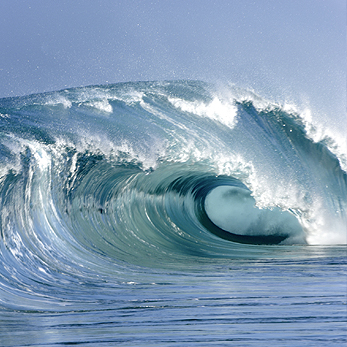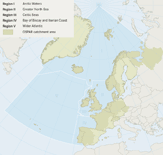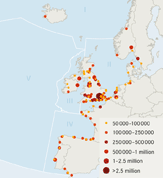Much of the coastal area in the North-East Atlantic is densely populated, highly industrialised or used intensively for agriculture. Population density is much higher on the coasts than inland, with most of the population in some areas of Northern Europe being concentrated in coastal settlements. Population density is highest on the Iberian and North Sea coasts (with over 500 inhabitants per km2) and lowest in Region I (with fewer than 10 inhabitants per km2 in some remote areas) and Region V, which covers more than half of the OSPAR maritime area, dominated by High Seas. Even in areas with low population density, large coastal settlements can exert pressures on the sea Figure 2.1.
Continue to "Marine and coastal ecosystems provide a range of goods and services"



